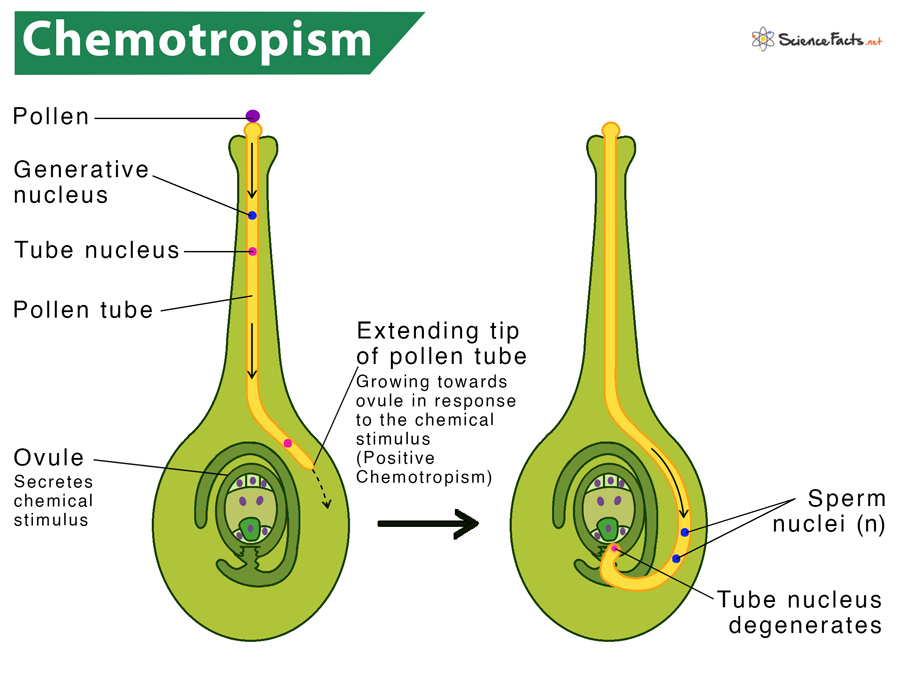The word ‘chemotropism’ is an amalgamation of two words, ‘chemo’ and ‘tropism’, referring to ‘chemical’ and ‘tropic movement’, respectively. As it is a type of tropic movement, here also, the growth is directional, i.e., towards or away from an external stimulus. So, parts of the organism respond to the chemical stimulus or gradient, instead of the entire organism.
Its Types
Examples of Chemotropism
- Positive chemotropism: Here, the growth occurs towards the stimulus. Example: Growth of the pollen tube towards the ovules.
- Negative chemotropism: Unlike the previous, the growth happens away from the stimulus here. Example: Roots grow away from harmful acids sometimes present in the soil. During pollination, pollen grains containing the male gametophyte gets deposited on the stigma of the same, or another flower via different pollinating agents like insect, wind, or water. If the pollen is compatible, it germinates and begins to grow a pollen tube. Upon entering, the pollen grain dissociates into generative and tube nucleus, respectively. The generative nucleus further divides into two sperm nuclei, which takes part in double fertilization. In the meantime, the ovule releases some chemicals, due to which the pollen tube shows a positive chemotropic movement towards it. In response to this chemical signal, the pollen tube develops a defined tip rich in calcium. This calcium gradient localized in the tip promotes the pollen tube’s elongation and directs it towards the ovule. Another plant part that shows chemotropism is root. When it grows towards useful minerals, it is considered positive, whereas it is called negative when it grows away from harmful acids present in the soil.
In Animals
Similar to plants, animals also show chemotropism. For instance, whenever a neuron receives an extracellular stimulus, its axon grows towards it to convey the impulse to the brain or spinal cord for further processing. Upon receiving a stimulus, receptor cells secrete some proteins that can attract or repel specific neurons. These signals guide the developing axon to innervate the correct target tissue. Some signal proteins that aid in neuronal growth are semaphorins, netrins, fibroblast growth factors, and neurotrophins.
In Bacteria
Bacteria like Azotobacter, Bacillus, Clostridium, and Klebsiella exhibit nitrogen fixation, which is an example of chemotropism.
In Fungi
Fungi, like yeast, release chemicals called pheromones to attract mates.
